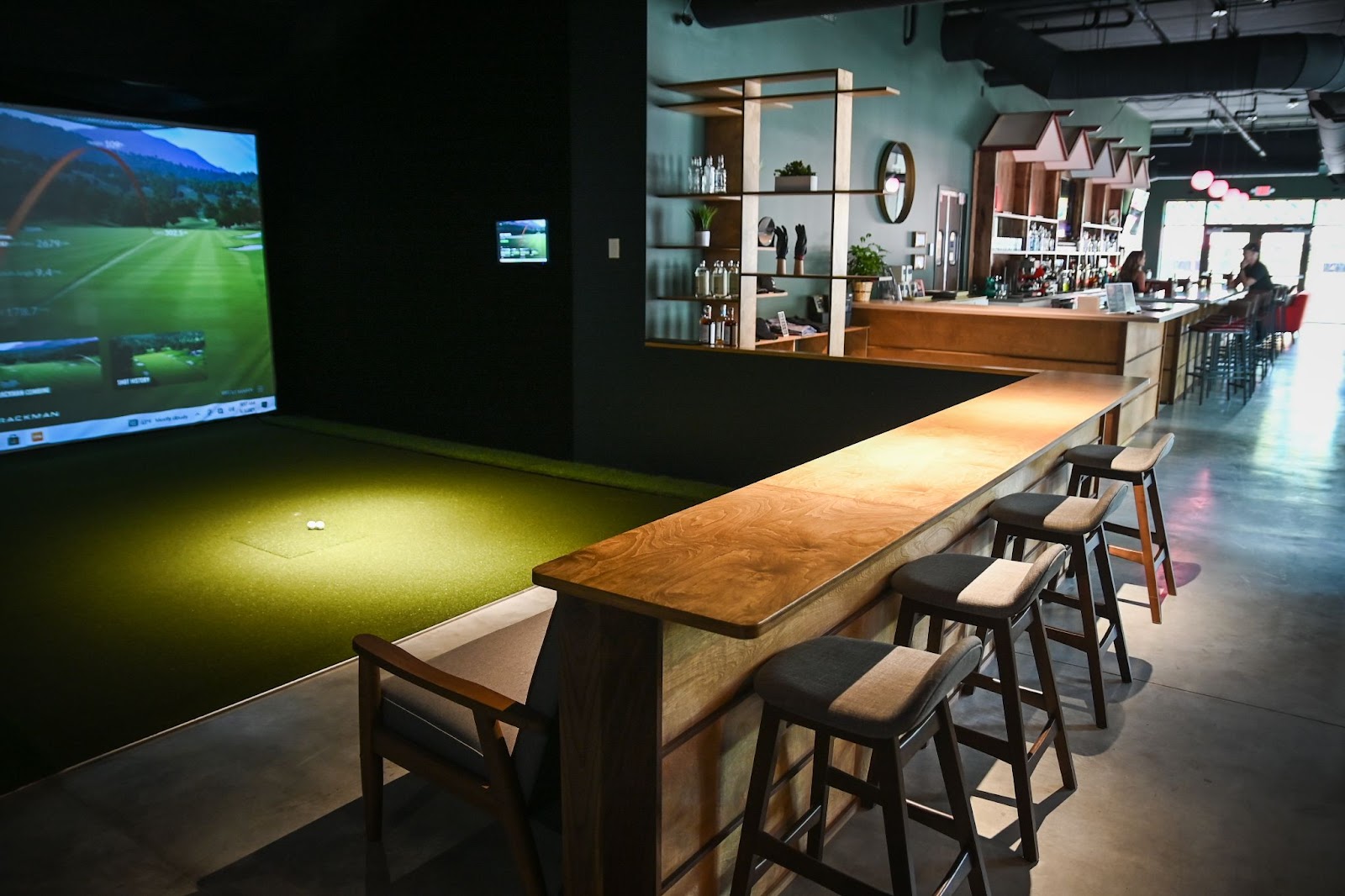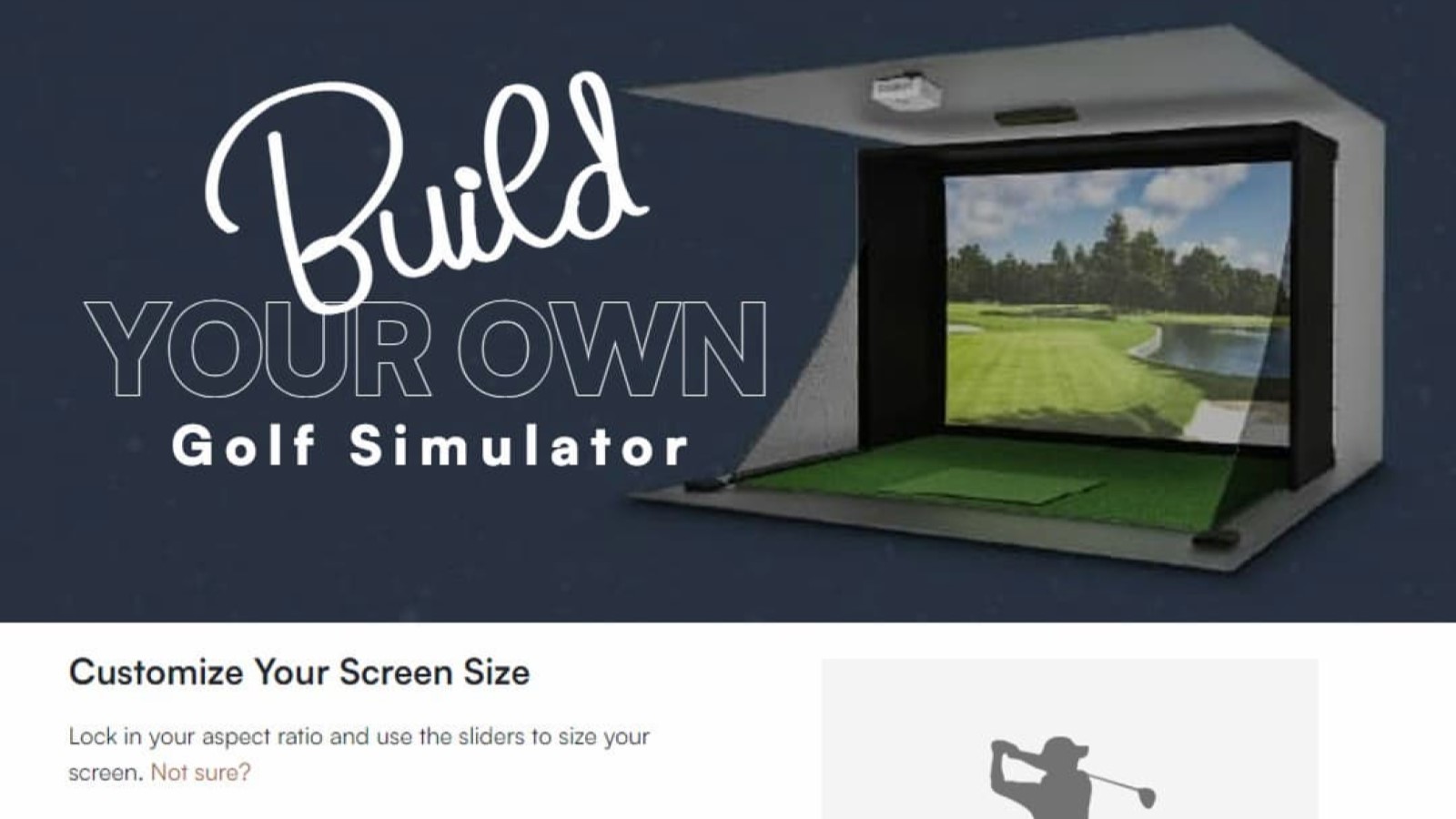Setting the right prices for your indoor golf simulator business is an important step in ensuring profitability while attracting and retaining customers. Finding the balance between affordability and value can be challenging, but with the right strategies, you can confidently establish pricing that maximizes revenue and keeps golfers coming back for more.
Below are Carl’s 8 tips to help you navigate the world of pricing at your indoor golf simulator business:

Tempo Golf Club in Huntersville, NC
Managing Golf Simulator Business Profitability
1) Understand Your Costs
When it comes to setting prices for any business, understanding your costs is crucial. You'll want to take into account all expenses, both direct and indirect, and consider how they impact your bottom line. This means factoring in everything from rent and equipment maintenance to software fees, utilities, and staffing costs. Don't forget to include any other operational expenses unique to your business.
Once you have a clear picture of your costs, it's time to calculate the average cost per hour of simulator usage. This will help you determine the minimum price you need to charge per hour to cover your expenses and make a profit.
Here’s a simplistic formula to calculate the minimum hourly rate of a commercial golf simulator:
Costs per month / Usage (hrs per month) x (1 + Desired Profit %) = Minimum Hourly Rate
Keep in mind that setting prices too high will drive away potential customers, while setting them too low will leave you struggling to stay afloat.
Finding the perfect balance requires careful consideration of your target audience, your competitors' pricing, and your own business goals. By taking the time to crunch the numbers and do your research, you'll be able to set prices that are fair, competitive, and sustainable in the long run.
2) Research the Market
Gain a deep understanding of the market landscape in your area. Conduct thorough market research of indoor golf businesses (as well as comparable businesses, ie. golf coaches or entertainment venues) to study your competitors and analyze their pricing models. By doing so, you can determine the average rates for indoor golf simulator businesses and use this information to position your pricing competitively.
Before opening his own indoor golf business, Mike Rucci of Smash Factor Indoor Golf learned that the demand for golf simulator play time was much higher than the supply in his local area, which is why he decided to open his own indoor golf business.

Smash Factor Indoor Golf in Aurora, Illinois.
But it's not just about undercutting your competitors. You also need to consider the quality of your indoor golf facilities and the level of customer service you provide. If your indoor golf facilities are top-notch and your customer service is exceptional, you can justify charging a premium price. On the other hand, if your facilities are basic and your customer service is a work in progress, you'll need to adjust your golf simulator pricing model accordingly.
Exceptional customer service is the cornerstone of customer retention. Train your staff to be knowledgeable, friendly, and attentive to customer needs. Greet customers warmly, offer assistance, and be proactive in addressing any concerns or questions they may have. Strive to create a welcoming and personalized experience that exceeds expectations, leaving a lasting positive impression.
Additionally, you should consider any unique features or offerings that differentiate your golf simulator business from the competition. Do you have the latest technology or the most accurate swing analysis? Are you the only indoor golf simulator business in the area? These factors can help you stand out in the market and justify charging a higher price.
Ultimately, your goal should be to offer value to your customers while building a profitable indoor golf business. By conducting thorough market research and considering all of these factors, you can develop a pricing strategy that achieves both.
3) Define Your Target Audience
To successfully market your indoor golf simulator business, you must first understand who your target audience is. This means taking the time to identify their preferences, spending habits, and willingness to pay. Different customer segments may have varying expectations and budgets, so it's important to tailor your pricing to meet the needs and expectations of your target market.
For instance, if you're selling golf simulator reservations, you'll need to consider the needs of both casual and avid golfers. Casual golfers may be looking for occasional entertainment and may be more price sensitive, while avid golfers seeking a high-end experience may be willing to pay more for premium products. Understanding these differences and catering to them accordingly can help you capture a larger share of the market.
Ultimately, the key to success is to put yourself in your customers' shoes and think about what they value most. Whether it's affordability, quality, or convenience, there's a pricing strategy that can help you meet their needs and stand out from the competition. By doing your research, you can gain a deeper understanding of your target audience and create a pricing strategy that resonates with them.

Blindshot Social Club in Madison, Wisconsin.
4) Create Tiered Pricing Options
One effective way to attract and retain customers in a golf simulator business is to offer tiered pricing options. Doing this allows you to cater to a wider range of budgets and preferences, increasing your chances of converting prospects into loyal customers.
Consider creating different packages based on factors such as peak and off-peak hours, length of play, and additional services or amenities.
For example, you could have a basic hourly rate for those on a tight budget, discounted rates for off-peak hours, or bundle packages that include lessons. This allows customers to pick the option that best suits their needs and budget, thereby enhancing their overall experience and increasing the chances of repeat business.
.jpg?width=960&height=540&name=Tiered%20Golf%20Sim%20Pricing%20(1).jpg)
Flexibility is key to accommodating customers' busy schedules. Provide convenient booking options, including online reservations, flexible time slots, and the ability to schedule sessions in advance.
By providing a range of pricing options, you can also differentiate your business from competitors and create a brand that stands out in the minds of customers.
5) Offer Membership and Loyalty Programs
Membership programs are an excellent way to provide your customers with exclusive benefits and perks. For example, you could offer:
- Discounted rates for members
- Priority booking for events or activities
- Access to exclusive events or experiences
- Additional perks such as free merchandise or upgrades
Providing these benefits will make your customers feel valued and appreciated, which can help to build a sense of loyalty and encourage them to keep coming back for more.
Loyalty programs, on the other hand, are designed to incentivize customers to keep coming back, even if they don't need your services at the moment. For example, you could offer points or rewards based on the number of hours played or dollars spent, which customers can redeem for future discounts or special privileges. This can help to incentivize repeat business and build a loyal customer base, as customers will be more likely to spend more time and money with your business in order to earn rewards.
Offering exclusive benefits and incentives can keep your customers coming back for more and help you build a loyal following of repeat customers who are more likely to recommend your business to others.

6) Consider Seasonal and Promotional Pricing
Seasonal pricing allows you to adjust your rates to align with the fluctuations in demand throughout the year. This not only helps you maintain a steady flow of business during peak times but also ensures that you remain competitive during slower periods.
Offering special promotions during off-peak times can also incentivize potential customers to choose your business over competitors, especially if you provide unique experiences or services.
Host Events and Tournaments
In addition, hosting events or tournaments can be an effective way to generate buzz and excitement, fostering a sense of community amongst your customer base. Friendly competitions allow golfers to challenge each other and create lasting connections. This can lead to increased foot traffic, positive reviews, and increased revenue.

The Swing Indoor Golf Club in Temecula, California.
7) Monitor and Adjust
As a business owner, it’s important to regularly monitor your pricing strategy to ensure it remains effective and competitive.
Monitoring key metrics such as customer feedback, booking patterns, and revenue reports can help you determine whether your pricing structure is successful. By analyzing these metrics, you can identify areas that need improvement and make necessary adjustments to your pricing strategy.
Stay ahead of the competition by continuously seeking ways to improve and innovate. Stay informed about the latest advancements in simulator technology, software updates, and customer preferences. Regularly evaluate your offerings and identify areas where you can add value or introduce new experiences.
Being open to making changes will allow you to stay ahead of the competition and meet the evolving needs of your customers and the market. So, don't hesitate to tweak your pricing strategy when necessary to ensure your business remains profitable and sustainable over the long term.
8) Provide Exceptional Value
Providing exceptional value for your customers should be a top priority, regardless of your pricing structure. This means investing in high-quality impact screens, enclosures, launch monitors and golf simulator software to ensure a seamless user experience. Keep them well-maintained and up-to-date; regularly calibrate and test your equipment to ensure accuracy and reliability.
But it's not just about the technology - creating a comfortable and inviting atmosphere is equally important. Consider factors like lighting, seating, and decor to make your customers feel at ease and ready to swing.
Personalize the Indoor Golf Experience to Increase Value
Tailor the experience to individual customers whenever possible. Collect customer preferences, such as favorite courses, playing styles, or beverage choices, and make note of them for future visits. Use this information to provide personalized recommendations and surprises during their sessions. Small gestures can go a long way in making customers feel valued and appreciated.
Marketing Communications to Increase Value
Maintain regular communication with your customers through email newsletters and active social media presence. Share updates on new simulator features, upcoming events, or special promotions. Engage with customers by responding to comments and messages promptly. By staying connected, you'll remain top-of-mind and keep customers engaged with your business.
Regularly seek feedback from your customers to understand their experiences and identify areas for improvement. Provide multiple channels for feedback, such as suggestion boxes, online surveys, or in-person conversations. Actively listen to customer suggestions and concerns, and implement changes when appropriate. Demonstrating that you value their input and take action to enhance their experience will foster loyalty and trust.
By consistently delivering value in all of these areas, you'll be able to justify your prices and build a positive reputation that attracts and retains indoor golf customers. Word of mouth is a powerful marketing tool, and satisfied customers are more likely to recommend your business to others. So don't cut corners when it comes to value - it's an investment that will pay off in the long run.
Managing Indoor Golf Business Revenue
Pricing your indoor golf simulator services is a strategic process that requires balancing costs, market expectations, and the unique value you offer. By understanding your costs, knowing your target market, and providing flexibility and value-added options, you can set prices that drive profitability while attracting and retaining customers.
Regular monitoring, adjustments, and customer feedback will ensure your pricing strategy remains competitive and aligned with market dynamics. With the perfect pricing swing, your indoor golf simulator business will thrive in the ever-evolving industry.


.jpg?width=960&height=540&name=Tiered%20Golf%20Sim%20Pricing%20(1).jpg)
